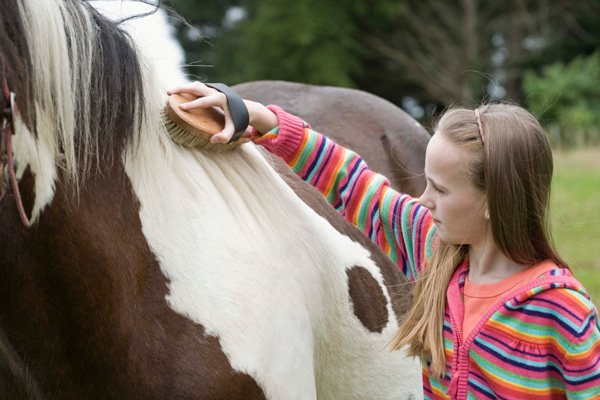
Arena ground surfaces composed of man-made materials boast minimal maintenance and little if any breakdown in quality. Adapted to endure extreme high and low temperatures without melting or becoming brittle, footing such as polymer coated sand remains soft and pliable, as well as dust-free; what’s more, it does not require watering. In outdoor applications, its water-repellent nature ensures fast drainage–it won’t “absorb” water–which allows the arena to be used even after heavy rainfall.
“When compared to traditional arenas, maintenance involves only light harrowing and manure removal,” said Lynn Norley, Project Manager/Sales and Marketing at Attwood Equestrian Surfaces.
You should try to provide a surface that reduces concussion to the muscular and skeletal system of the horse and increases shear strength without becoming compacted, Norley said.
“Optimum shear strength allows the horizontal and vertical motions of the hoof to be arrested in a controlled, progressive manner,” she explained. “Riding on less than the top one-inch, the surface allows forward rotation–or breakover–of the hoof to give greater support plus cushion.”
Mark Neihart, owner of Premier Equestrian, stated that quality, stable footing is necessary to keep horses sound and at peak performance. He noted that textile footing additives are known for providing stability, while rubber additives provide cushion.
“Good footing doesn’t have to be costly,” he said. “There are many choices for footing additives.”
His final word of advice is to look for widely used products from trusted sources.
The Danger of Dust
Gina Greenlee, Soil Lab Specialist, with Midwest Industrial that features Arena Rx Synthetic Organic Dust Control, talks about the health risks inherent in airborne dust.
“It is an acknowledged fact that horses require 3,000% more oxygen while training and competing than when they are at rest, an oxygen level they are unable to reach when riding arena dust control is poor,” she said.
She added that airborne dust contributes to a number of problems ranging from compromised equine and human respiratory health, reduced visibility, complaints from nearby communities about dust, to deterioration of arena bases.
Greenlee stressed that, “When relying exclusively on water to reduce dust in your arena, it can be expensive and time consuming, often increasing the need for repairs and arena base reconstruction.”
If you are having problems with your existing arena footing, or are considering building a new indoor or outdoor arena, make sure to do your homework first. Talk to vendors, people who have various types of footing in your discipline, and show grounds managers (where you know the horse traffic is high so the footing needs to be able to stand up to the stress). Consider cost of various materials not only for installation, but for maintenance.


